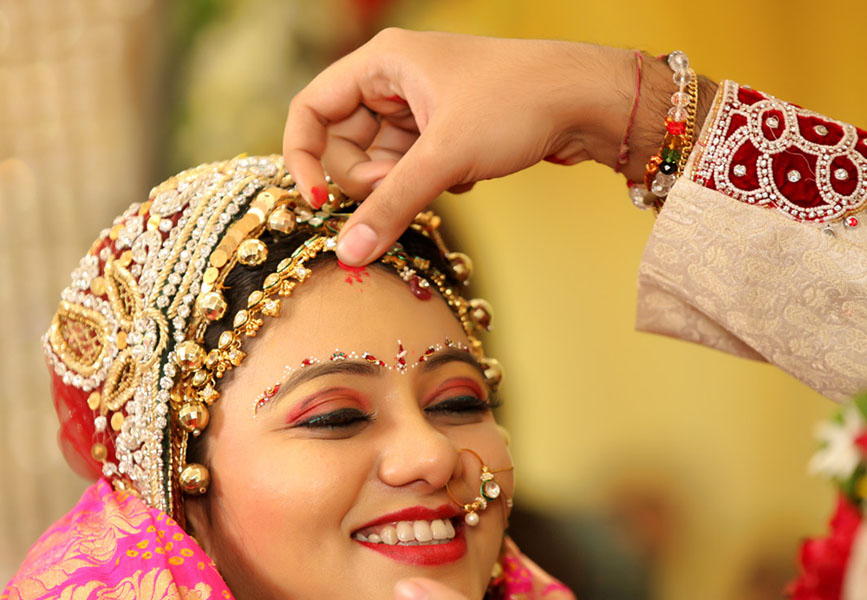Indian weddings comprise so many customs and rituals, over a period of days leading to the wedding, that by the time the couple sits at the ‘mandap’, they are either exhausted or distracted by all the fun and teasing taking place with friends and family, that they hardly focus on the actual wedding vows.
No wonder, not many people have much recollection of their actual wedding ceremony. Just to test you – Do you remember the ‘pheras’ and the vows that you took with each one of them? Think.. think! Nah! We are sure, you do not remember the vows, although the priest had recited them and asked you to repeat them after him.
Well, you cannot go back to your wedding day, however, you can surely revisit your wedding vows. In fact, it could be a great idea for you to renew your wedding vows. It will help understand the significance of those vows more clearly and practise them with sincerity. It will also bring you emotionally closer to each other and rekindle the lost romance in your marriage.
If you do not know the Saat Vachan (7 Vows) and Saat Pheras (7 circles), here’s a low-down on their meaning and significance for your benefit. |
| Image Credits: iers.grial.eu |
Firstly, this sacred Hindu custom is called Saptapadi, that translates to Seven Steps. The ritual initiates by tying a knot with one end of the bride’s dupatta to the groom’s stole. The couple then takes seven rounds (in Gujarati and Marwari communities, there are only 4 rounds) around the holy fire. The priest chants mantras as the couple goes around the fire. The bride and groom are officially declared husband and wife once these seven circles are complete.
Here are the Seven Steps or Pheras and their significance:
First Step: The first step is to invoke the Gods for plentitude of food. The Groom promises to provide for the welfare and happiness of his wife and children, while the Bride takes up the responsibility for the home.
Second Step: This step is to pray to the Gods to give them mental and physical strength, to protect and love. The Groom promises to protect and love the house and children, and the Bride promises to provide courage and strength.
Third Step: This step talks about the marital duties of the couple and their fulfillment. The Groom prays for a long, prosperous life for the couple and their children, while the Bride not only vows to love her man unconditionally, but also promises to remain chaste.
Fourth Step: In this step, the Groom prays for noble and obedient children, while the Bride promises to please her husband in every way she can.
Fifth Step: This step pledges happiness and contentment. The Groom accepts the woman as his best friend and staunchest well-wisher and thanks her for enriching his life. The Bride, on the other hand, promises to love and cherish her man for as long as she lives.
Sixth Step: The Groom prays for joy and peace in each other’s life. And the Bride promises to stand by her man always, in happiness and in sorrow.
Seventh Step: This final step is a commitment to stay with each other for eternity. The Groom accepts the woman as his wife, and claims they are one now. The Bride accepts herself as the wife. She promises to love, honour and cherish each other forever.
“Now let us make a vow together. We shall share love, share the same food, share our strengths, share the same tastes. We shall be of one mind; we shall observe the vows together. I shall be the Samaveda, you the Rigveda, I shall be the Upper World, you the Earth; I shall be the Sukhilam, you the Holder – together we shall live and beget children, and other riches; come thou”.
 |
| Image Credits: www.srkpro.com |
Lastly, the groom ties a Mangalsutra (a necklace with black and golden beads and a golden pendant) around the neck of the bride and fills vermillion (Sindoor) in her center hair parting under the Maang Tikka.
Not surprising then that Mangalsurtra, Maang Tikka and Sindoor form an important part of the Solah Sringaar of a bride. Apart from lending the obvious aesthetic appeal, they are important for the physical health of the woman and the material and spiritual well being of the couple.
To read more about Solah Sringaar and its importance for a married woman, visit our Expert guide.
So how about lighting a bonfire and taking the seven steps and reciting the seven vows all over again?

0 comments